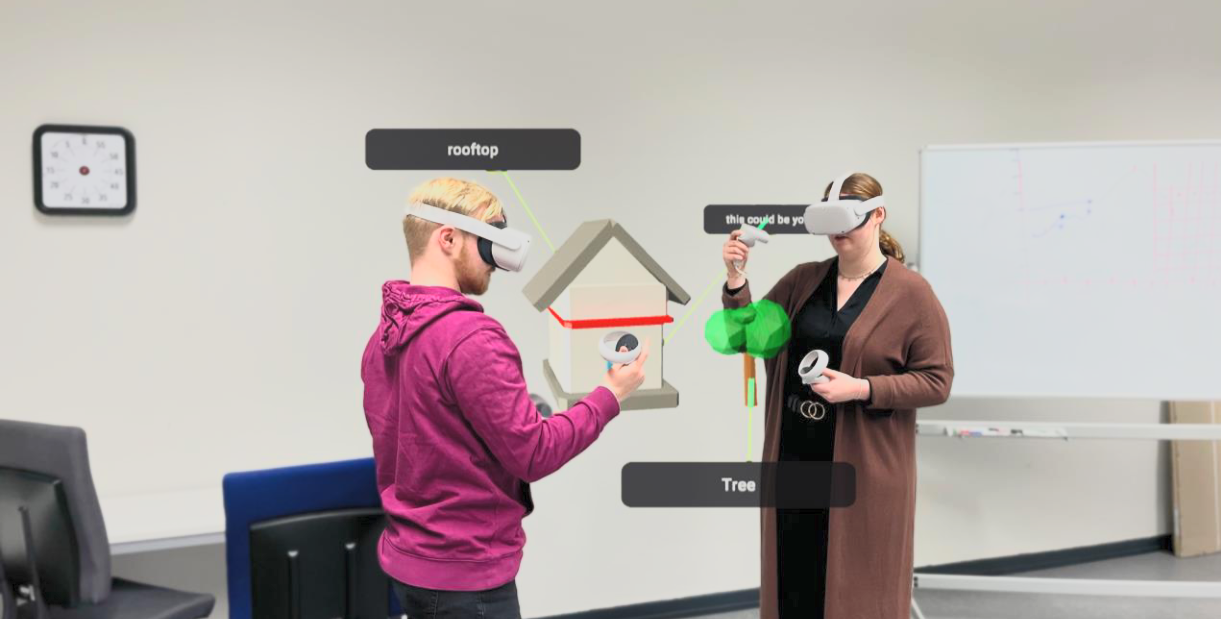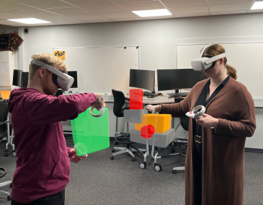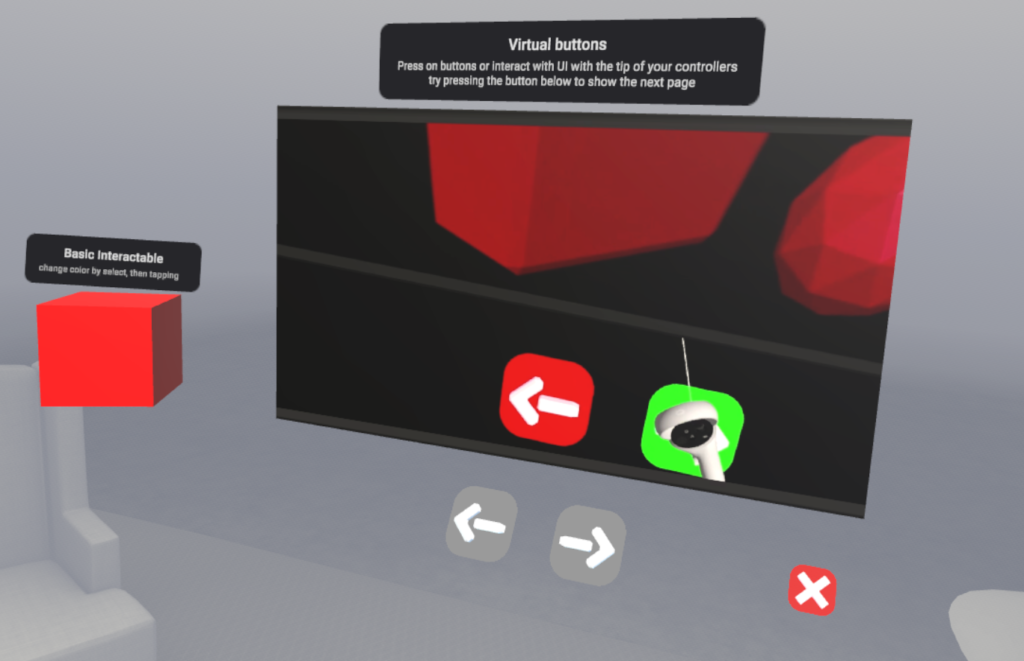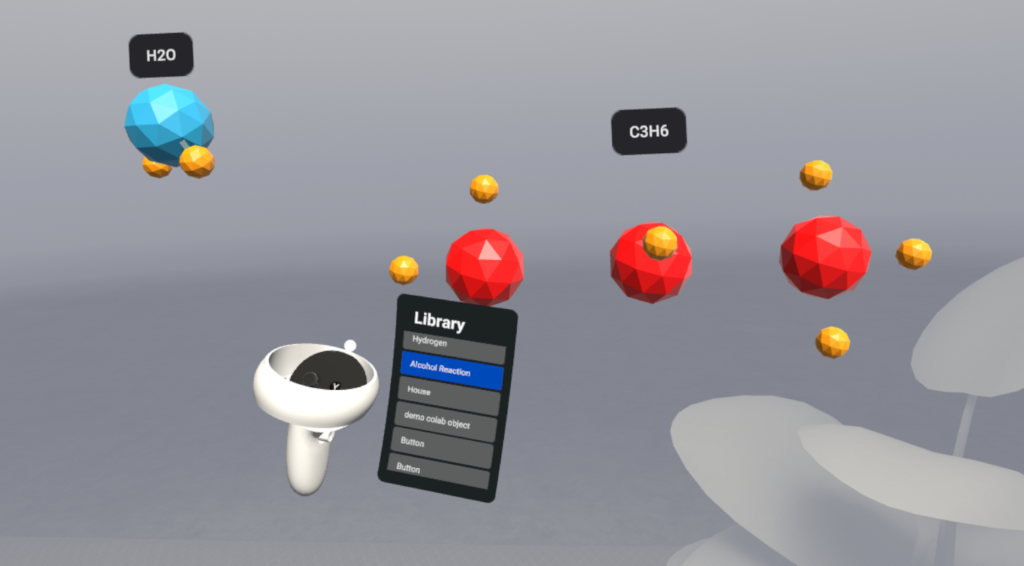
AR Assistance For Cooperative Learning Environments
MR Education
2023
As Extended Reality (XR) technologies gain traction in education, Augmented Reality (AR) offers powerful new ways to support learning by embedding virtual content directly into our surroundings.
This Bachelor thesis focuses on the development of an AR tool designed to enhance learning environments by enabling users to build, interact with, and collaboratively explore custom 3D learning materials.
With the Meta Quest 2 as a low-cost, accessible platform, the tool allows learners to visualize and manipulate information in context—bridging the gap between abstract concepts and real-world understanding.
Studies show that contextualized AR environments can significantly improve engagement and retention, making them a valuable addition to educational toolkits.
The goal was to create a system that is not only functional and effective, but also intuitive and inclusive for a wide range of users.



Role & Tasks
Researched AR for education and usability.
Designed intuitive UX and interaction flow.
Developed the prototype in Unity for Quest 2.
Built tools for 3D creation and collaboration.
Led user testing and analyzed feedback.
Iterated on design based on test results.
Authored the full Bachelor thesis.
The idea for this thesis emerged from the growing need for adaptable, digital learning tools and the unique strengths of AR to meet that need. The concept was to build an AR platform where users can create personalized 3D learning materials either on the spot or by drawing from a shared library. These models could be anything from basic geometric forms to detailed educational structures or entire immersive learning scenes.
The building process was designed to be fast, intuitive, and accessible—with a low barrier to entry—yet scalable in complexity. Users can assemble objects, rotate and group them, add annotations, or link them to other materials, creating connected, interactive learning pathways. Key to the concept was collaboration: the tool enables multiple users to share a virtual space where they can co-create, comment on, and interact with educational content together.
Built for the Meta Quest 2, the tool takes advantage of affordable, mobile hardware to make the experience widely accessible. The prototype allows for content creation directly within the physical learning environment, merging digital and physical cues for deeper contextual understanding.
User testing showed the prototype achieved its goal of being both approachable and effective. Users were able to build and explore educational content collaboratively with minimal onboarding. The final evaluation confirmed that AR can play a meaningful role in learning—especially when users are empowered to shape and adapt their materials to suit their individual or group needs.
This project demonstrates how immersive technologies, when thoughtfully designed, can transform traditional educational approaches into dynamic, student-driven experiences.